the witness tree
The weather in Gettysburg was warm on July 2, 1863.
By early afternoon, the temperature was in the low 80s.
So, Daniel Sickles, the commander of a Union force of more than ten thousand men, set up his field headquarters beneath this tree on Peter Trostle’s farm.
The tree was then seventy-five years old and of good size.
Its shade offered a welcome respite from the damp heat wafting across the open farm fields.
Rain was coming.
Fighting had broken out in Gettysburg on the day before and more heavy action was expected.
General Meade, the commander of the Army of the Potomac, had ordered Sickles to maintain a defensive position at the farm.
But when Sickles arrived there, he saw a peach orchard 7/10th of a mile away.
He became convinced that the orchard’s higher ground would provide a more favorable position for his men.
Sickles consulted with his staff beneath the tree, then decided to advance into the orchard.
Doing so would violate Meade’s order, but he nevertheless ordered his men to advance.
But it was a fatal mistake.
The advance left Sickles’s men exposed to Confederate attack on two sides, and their line was stretched thin.
Confederate General James Longstreet assaulted Sickles’s men in fighting which would prove to be one of the most intense confrontations in the three-day Battle of Gettysburg.
And it was a rout.
Sickles’s force was driven back to its original position.
Forty percent of his men had been killed or wounded in the retreat.
As Sickles, mounted on his horse, watched the battle unfold, a Confederate artillery shell shattered his leg.
It would be amputated.
Sickles would never again command men on a battlefield.
This old oak tree withstood it all, bearing silent witness to hubris and suffering beyond imagination.
And, for years afterwards, people would come to Trostle’s Farm, stand beneath this tree, and try to make sense of it all.
In 1886, Sickles would come back to this place to defend his insubordination.
Historians still debate that day in the peach orchard.
And now, the old tree is the lone survivor of the conflagration.
Eighty years after the battle, the poet Robert Frost had this to say.
And off this corner in the wild,
Where these are driven in and piled,
One tree, by being deeply wounded,
Has been impressed as Witness Tree
And made commit to memory
My proof of being not unbounded.
Thus truth’s established and borne out
Though circumstanced with dark and doubt --
Though by a world of doubt surround.
******************************
I’ll see you tomorrow.
- Brenda





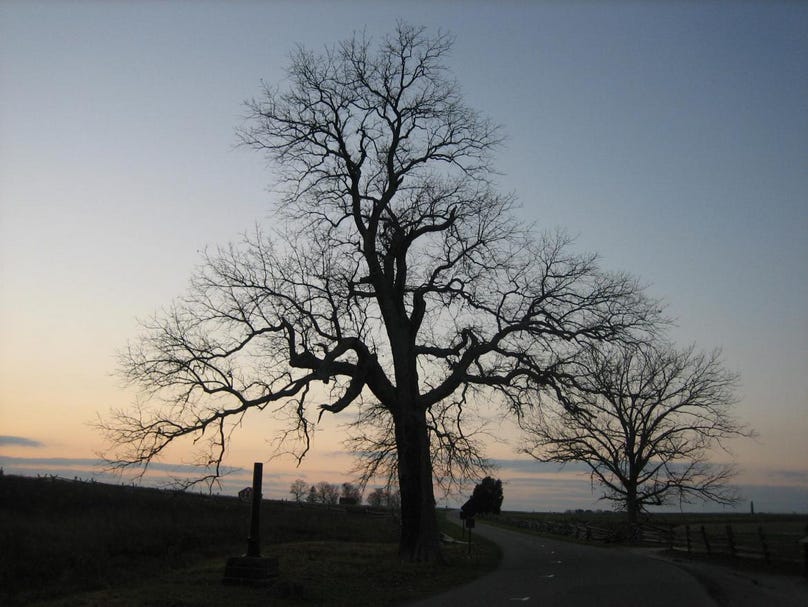
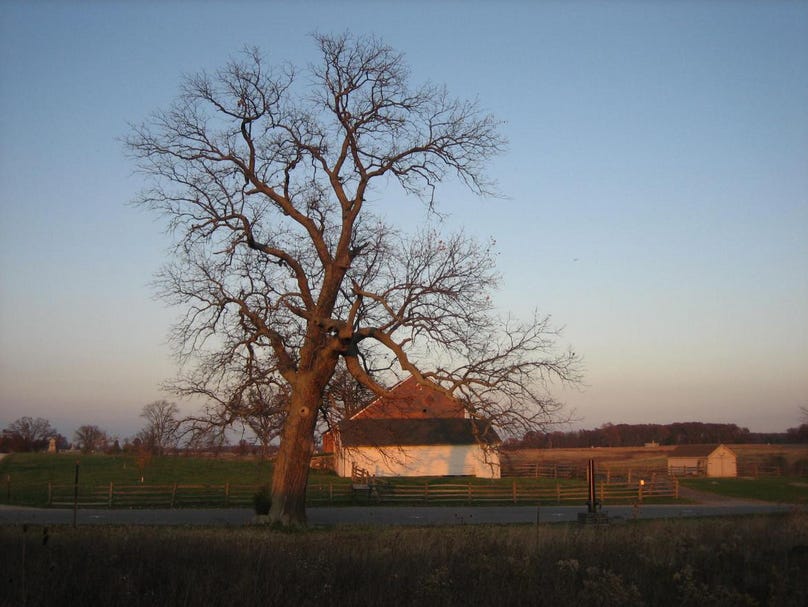
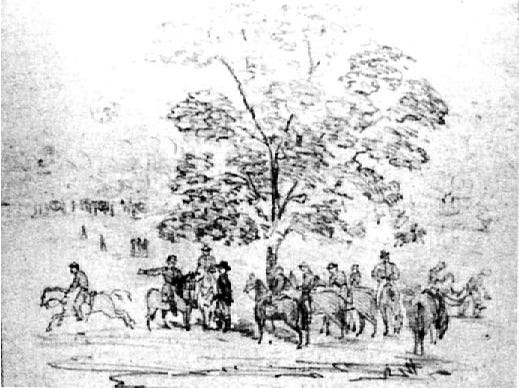
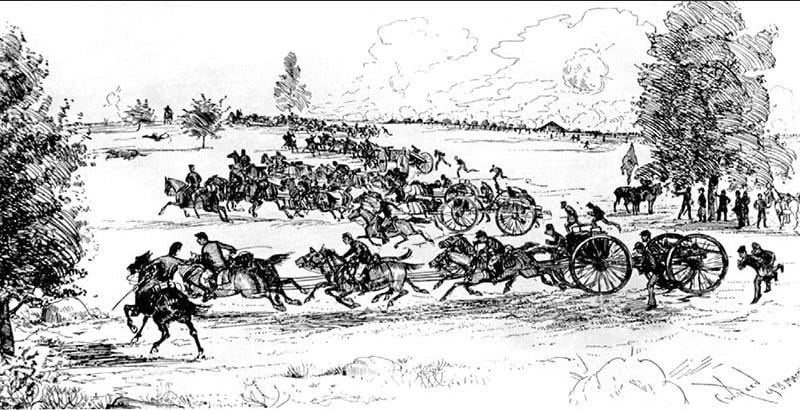
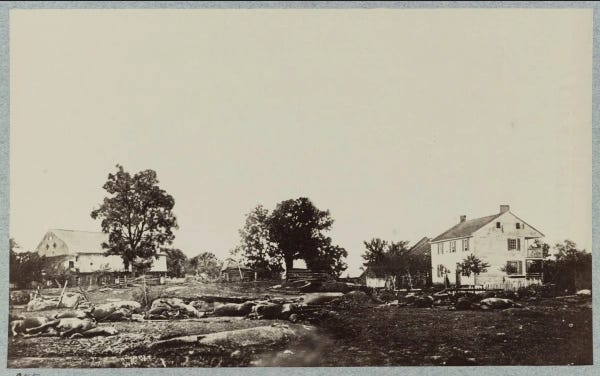
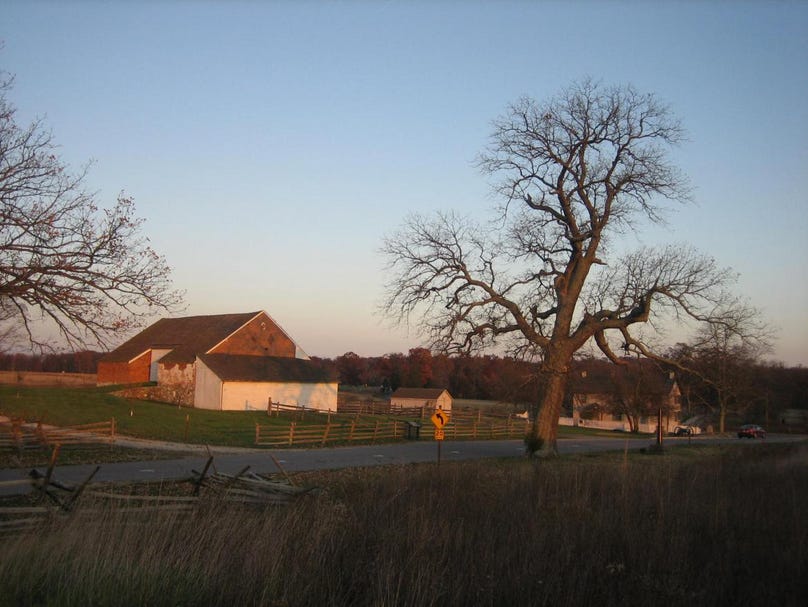
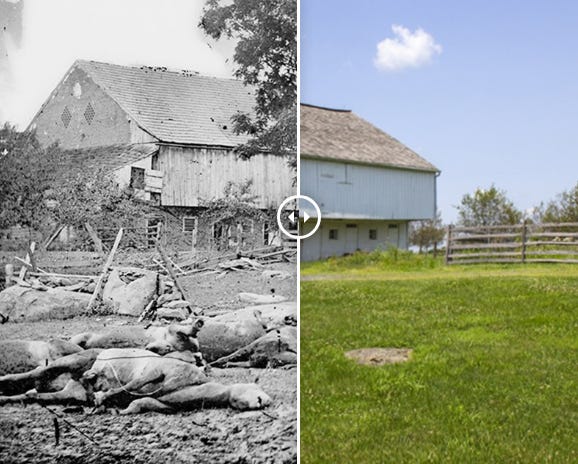
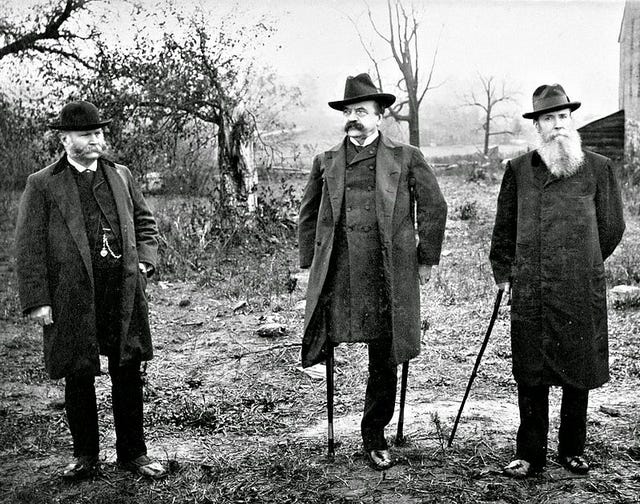
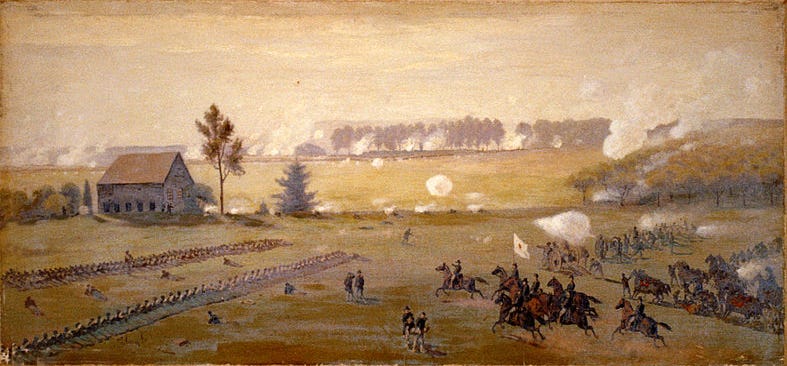


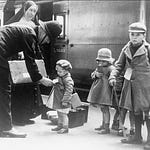
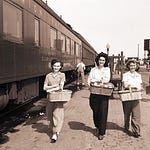

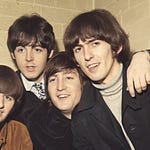
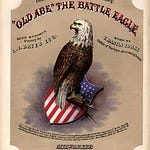

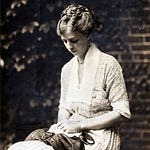
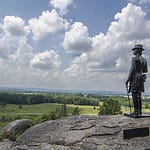
Photo of the Day